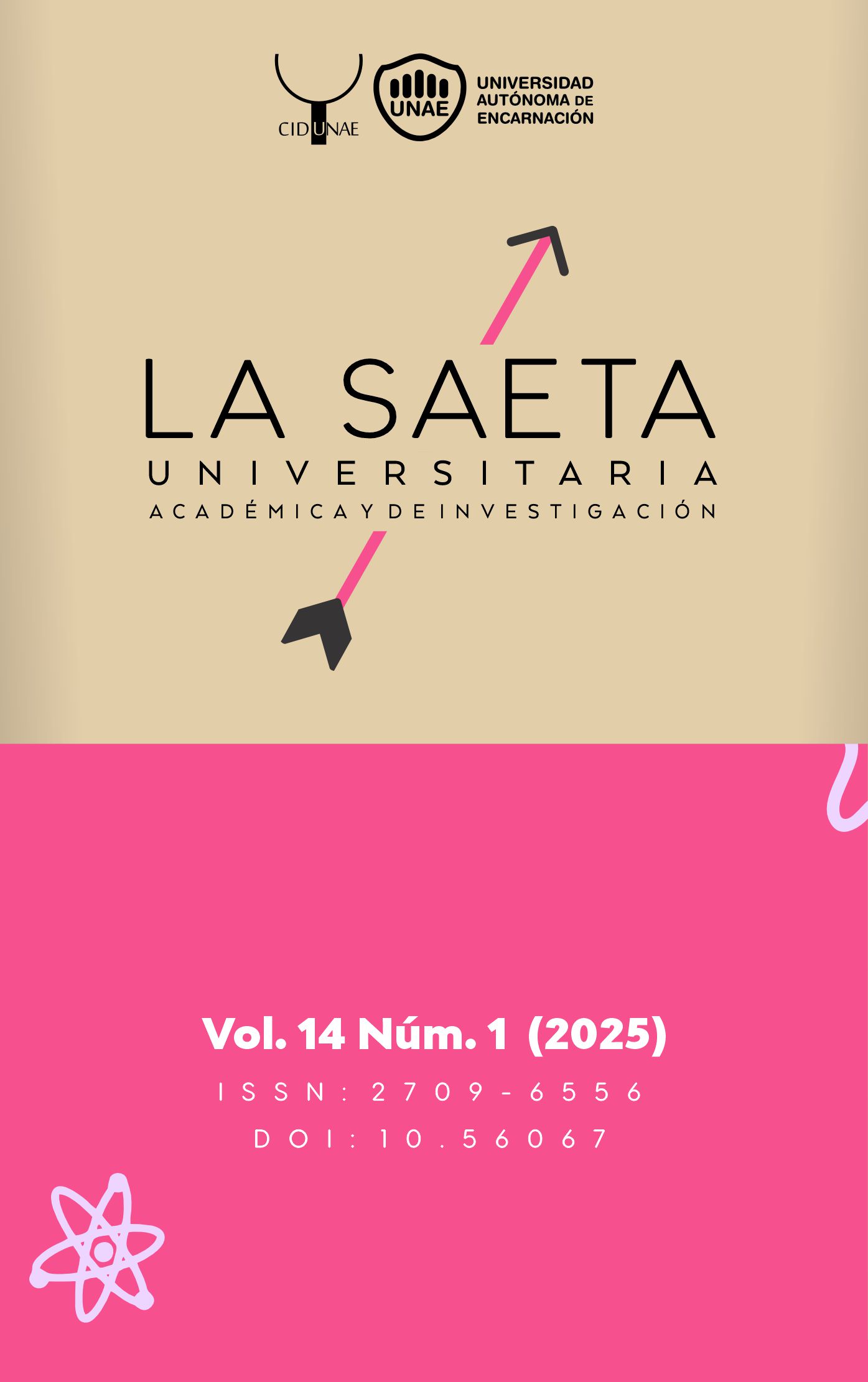Onychophagia and Associated Psychological Factors in Adolescents: A Comparison Between Urban and Rural Areas in the District of Caaguazú, Paraguay
DOI:
https://doi.org/10.56067/saetauniversitaria.v14i1.526Keywords:
School onychophagia, Anxiety, Stress, Adolescents, Urban and rural areasAbstract
Onychophagia is a common habit among adolescents and is associated with psychological factors such as stress and anxiety. This comparative study aimed to analyze the prevalence of onychophagia and its relationship with psychological variables in students from two schools in the district of Caaguazú: one located in an urban area and the other in a rural area. A quantitative, cross-sectional, and correlational design was applied, with a sample of 320 adolescents aged between 13 and 18 years. The Beck Anxiety Inventory for Youth (BAI-Y), the Perceived Stress Scale (PSS-10), and an onychophagia questionnaire were used. The results show a higher prevalence of onychophagia in the urban area (61.9%) compared to the rural area (49.4%), with significant associations with moderate/severe anxiety and high stress levels. Implications for school-based psychological interventions are discussed.
Downloads
References
Almeida Mantilla, Y. G., Acevedo Manrique, H. G., & Sánchez Durán, M. Y. (2017). Factores asociados a la onicofagia en estudiantes de odontología. Revista CES Odontología, 30(1), 45–53. https://doi.org/10.21615/cesodon.30.1.5 DOI: https://doi.org/10.21615/cesodon.30.1.5
Asociación Médica Mundial. (2013). Declaración de Helsinki. Principios éticos para las investigaciones médicas en seres humanos. https://www.wma.net/es/policies-post/declaracion-de-helsinki-de-la-amm/
Beck, A. T., & Steer, R. A. (1993). Beck Anxiety Inventory Manual. Psychological Corporation.
Bisquerra, R. (2009). Metodología de la investigación educativa (2.ª ed.). La Muralla.
Boroujeni, A. Z., Yazdi, S. A., & Noori, H. (2020). Urban stress and its psychological consequences in adolescents. International Journal of Adolescent Mental Health, 32(4), 412–420.
CIOMS (Consejo de Organizaciones Internacionales de las Ciencias Médicas). (2017). Pautas éticas internacionales para la investigación relacionada con la salud con seres humanos. https://cioms.ch/wp-content/uploads/2017/01/CIOMS-EthicalGuidelines-SP.pdf
Cohen, S., Kamarck, T., & Mermelstein, R. (1983). A global measure of perceived stress. Journal of Health and Social Behavior, 24(4), 385–396. https://doi.org/10.2307/2136404 DOI: https://doi.org/10.2307/2136404
Creswell, J. W., & Creswell, J. D. (2018). Research design: Qualitative, quantitative, and mixed methods approaches (5.ª ed.). SAGE Publications.
Crosby, J. M., Dehlin, J. P., Mitchell, P. R., & Twohig, M. P. (2014). Acceptance and commitment therapy for problematic nail biting: A randomized controlled trial. Journal of Contextual Behavioral Science, 3(2), 90–100. https://doi.org/10.1016/j.jcbs.2014.02.003 DOI: https://doi.org/10.1016/j.jcbs.2014.02.003
Dankhe, G. L. (1986). Comparative research. In Research Methods in Social Relations (pp. 455–478). Holt, Rinehart and Winston.
Field, A. (2018). Discovering statistics using IBM SPSS statistics (5.ª ed.). SAGE Publications.
Ghanizadeh, A. (2008). Association of nail biting and psychiatric disorders in children and their parents in a psychiatrically referred sample of children. Child and Adolescent Psychiatry and Mental Health, 2(1), 13. https://doi.org/10.1186/1753-2000-2-13 DOI: https://doi.org/10.1186/1753-2000-2-13
Hernández Sampieri, R., Fernández Collado, C., & Baptista Lucio, P. (2014). Metodología de la investigación (6.ª ed.). McGraw-Hill Educación.
Keuthen, N. J., O’Sullivan, R. L., & Sprich-Buckminster, S. (2000). Trichotillomania: Current issues in conceptualization, assessment, and treatment. Psychotherapy and Psychosomatics, 69(4), 193–200. https://doi.org/10.1159/000012397 DOI: https://doi.org/10.1159/000012397
Kerlinger, F. N., & Lee, H. B. (2002). Investigación del comportamiento: Métodos de investigación en ciencias sociales (4.ª ed.). McGraw-Hill.
Maroufi, M., Sepehrmanesh, Z., & Amiri, S. (2021). Nail biting and psychiatric disorders: A systematic review. International Journal of Pediatric Psychiatry, 9(1), 34–41.
Pacan, P., Grzesiak, M., Reich, A., Kantorska-Janiec, M., & Szepietowski, J. C. (2014). Onychophagia and dermatillomania prevalence among young adults. Acta Dermato-Venereologica, 94(1), 90–93. https://doi.org/10.2340/00015555-1603 DOI: https://doi.org/10.2340/00015555-1616
Pereira, A. C., Dias, L., & Martins, F. (2016). Comparación de factores de riesgo psicosocial entre adolescentes urbanos y rurales. Revista Brasileira de Saúde Escolar, 7(2), 23–31.
Penzel, F. (2003). The hair-pulling problem: A complete guide to trichotillomania. Oxford University Press.
Resnik, D. B. (2015). The ethics of research with human subjects: Protecting people, advancing science, promoting trust. Springer. https://doi.org/10.1007/978-3-319-15598-1
Silva, L. M., García, P., & Navarro, J. A. (2021). Hábitos nerviosos y salud mental en adolescentes: una revisión integrativa. Revista Latinoamericana de Psicología, 53(3), 123–132.
Tanaka, O. M., Vitral, R. W. F., Tanaka, G. Y., Guerrero, A. P. S., & Camargo, E. S. A. (2008). Nailbiting, or onychophagia: A special habit. American Journal of Orthodontics and Dentofacial Orthopedics, 134(2), 305–308. https://doi.org/10.1016/j.ajodo.2006.08.025 DOI: https://doi.org/10.1016/j.ajodo.2006.06.023
Williams, T. I., Rose, R., & Chisholm, S. (2006). What is the function of nail biting: An analog assessment study. Behaviour Research and Therapy, 45(5), 989–995. https://doi.org/10.1016/j.brat.2006.07.008 DOI: https://doi.org/10.1016/j.brat.2006.07.013
Published
Issue
Section
License
Copyright (c) 2025 La Saeta Universitaria Académica y de Investigación

This work is licensed under a Creative Commons Attribution 4.0 International License.
Este obra está bajo una licencia de Creative Commons Reconocimiento 4.0 Internacional.
Los autores que publican en esta revista están de acuerdo con los siguientes términos:
- Los autores conservan los derechos de autor y garantizan a la revista el derecho de ser la primera publicación del trabajo al igual que licenciado bajo una Creative Commons Attribution License que permite a otros compartir el trabajo con un reconocimiento de la autoría del trabajo y la publicación inicial en esta revista.
- Los autores pueden establecer por separado acuerdos adicionales para la distribución no exclusiva de la versión de la obra publicada en la revista (por ejemplo, situarlo en un repositorio institucional o publicarlo en un libro), con un reconocimiento de su publicación inicial en esta revista.














